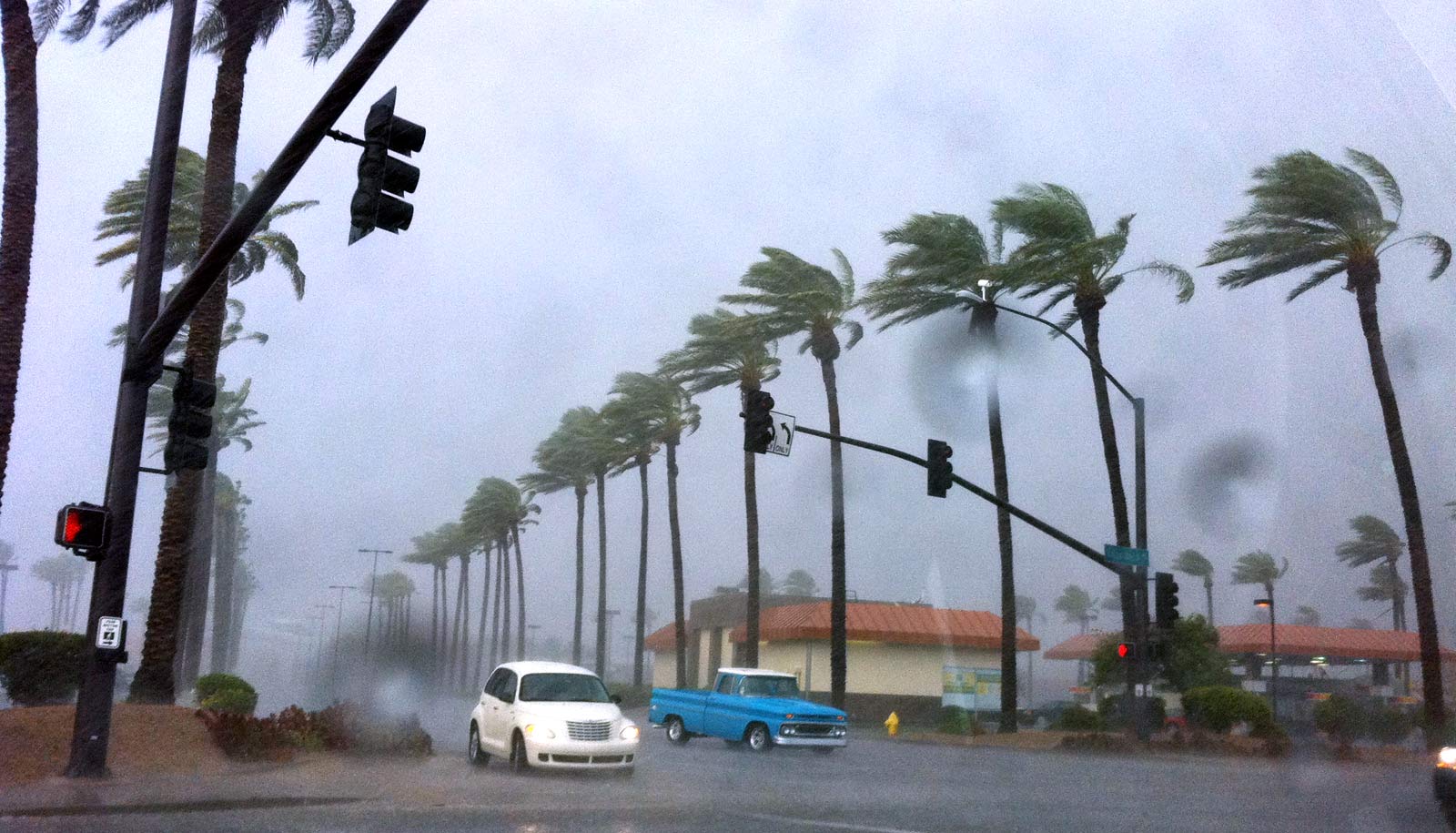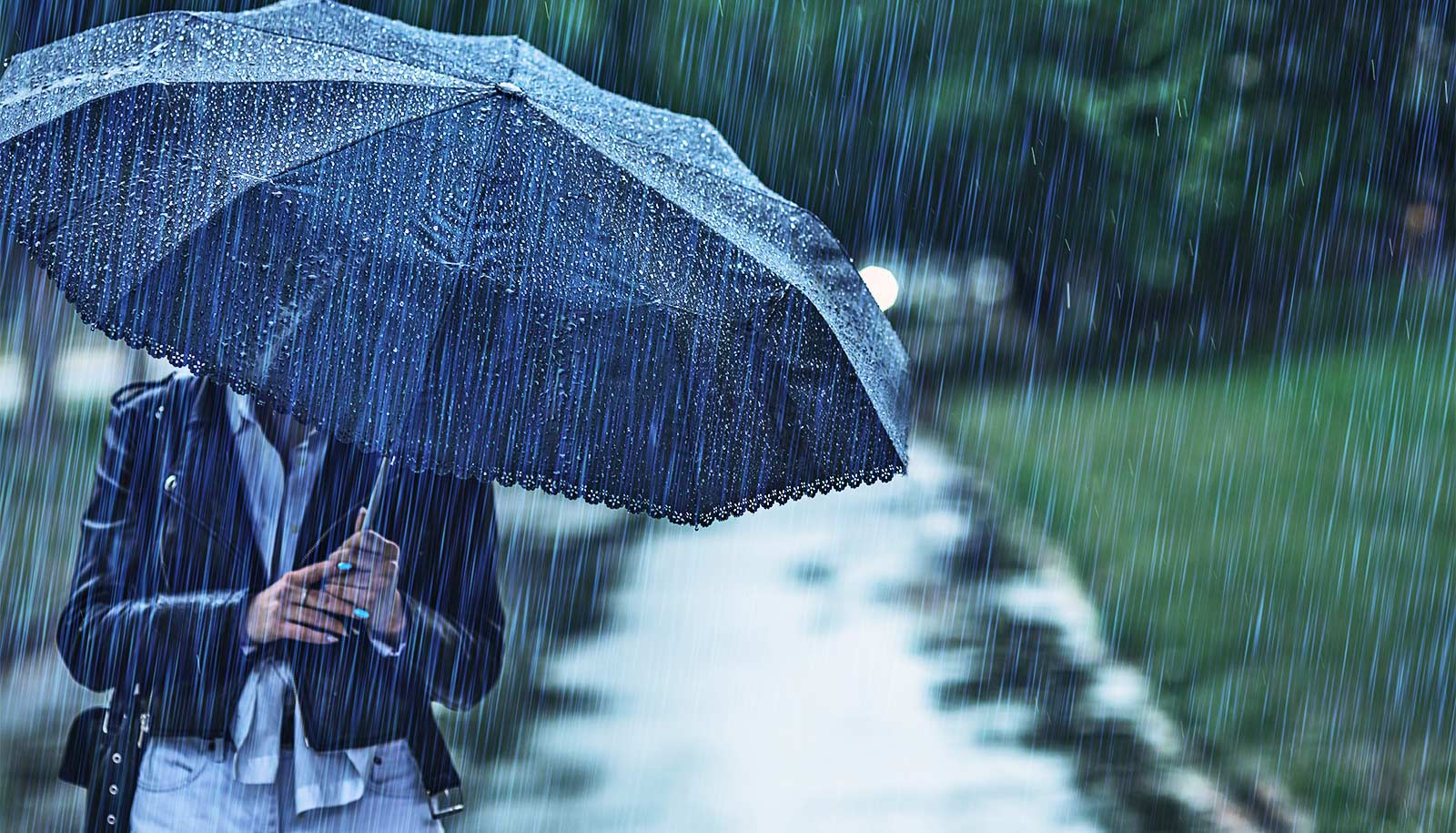Central and southwestern Arizona get fewer monsoon storms—but those they get bring heavier rain and stronger winds than storms from 60 years ago.
“The monsoon is the main severe weather threat in Arizona. Dust storms, wind, flash flooding, microbursts—those are the things that are immediate dangers to life and property,” says coauthor Christopher Castro, associate professor of hydrology and atmospheric sciences at the University of Arizona.
For a new study in the Journal of Applied Meteorology and Climatology, researchers compared precipitation records from 1950-1970 to those from 1991-2010 for Arizona. They also used those records to verify that their climate model generated realistic results.
“This is one of the first studies to look at long-term changes in monsoon precipitation,” Castro says. “We documented that the increases in extreme precipitation are geographically focused south and west of the Mogollon Rim—and that includes Phoenix.”
Having less frequent but more intense storms is consistent with what is expected throughout the world due to climate change, Castro saiys “Our work shows that it certainly holds true for the monsoon in Arizona.”
The weather gets crazy during Arizona’s monsoon
When researchers compared the results from climate and weather models to the actual observations, the model with a resolution of less than 1.5 miles accurately reproduced the precipitation data—but the models with resolutions of 10 miles or more did not.
“You just can’t trust coarser simulations to represent changes in severe weather,” Castro says. “You have to use the high-resolution model.”
Researchers wanted to identify risks from warm-season extreme weather, especially risks to Department of Defense installations in the American Southwest.
Existing global and regional climate change models don’t represent the North American monsoon well in either seasonal forecasts or climate projections. Looking at the average precipitation over the entire monsoon season doesn’t show whether monsoon storms are becoming more severe now compared with 60 years ago, Castro says.
Therefore, researchers on the current study looked for extreme rainfall events during 1950-1970 as compared with 1991-2010. Average precipitation was about the same, but 1991-2011 had more storms with very heavy rain.
Cave holds clues to stormy weather 8,200 years ago
“What’s going on in the changes to the extremes is very different from what goes on in the changes to the mean,” Castro says. “Big storms, heavy flooding—we found out those types of extreme precipitation events are becoming more intense and are becoming more intense downwind of the mountain ranges.”
The team tested a common computer model of the atmosphere to try to replicate the historical changes in monsoon storm intensity. The model, similar to one used by the National Weather Service for forecasts, produces results similar to what would be observed on radar or satellite imagery by realistically simulating the physical structure of monsoon thunderstorms.
Several different levels of resolution were tested but only by using the high resolution of 1.5 miles could the model replicate the actual rainfall recorded for the two 20-year periods being compared. While the recorded data showed only rainfall, the high-resolution models indicated rainier monsoon storms were accompanied by higher winds and more downbursts.
“Because the models get the precipitation right, it gives us confidence that the models get the winds right, too,” Castro says.
Monsoon storms in Phoenix used to be late in the evening but are now happening earlier. The time shift makes the storms more dangerous, since “it’s when people are more likely to be out on the roads.”
The team will next investigate whether the North American monsoon is changing in Mexico as well.
Other researchers from the University of Arizona and from the Universidad Nacional Autónoma de México are coauthors of the study. The US Department of Defense Strategic Environmental Research and Development Program and the Universidad Nacional Autónoma de México PAPIIT funded the work.
Source: University of Arizona



